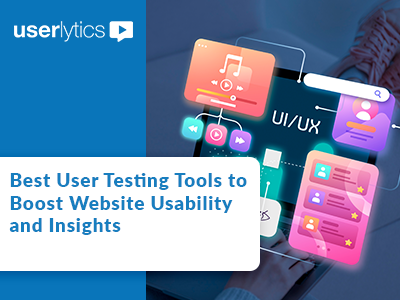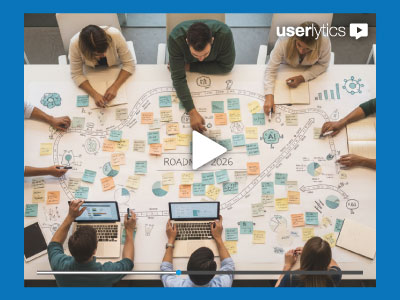In today’s digital-first world, a website or application is often the primary point of contact between a business and its customers. A seamless, intuitive user experience can be the deciding factor between a conversion and a bounce. But how do you know if your design truly works for your users? The answer lies in website usability testing. By observing real people interact with your product, you can uncover hidden friction points, validate design choices, and gather actionable insights to create experiences that delight and retain users.
This article will guide you through the landscape of modern user testing tools. From comprehensive user research platforms to specialized tools for specific tasks, we’ll explore the best options to help you understand your users and dramatically improve your website’s usability.
What Are User Testing Tools?
User testing tools are software platforms designed to facilitate user research by capturing how participants interact with a website, app, or prototype. These platforms provide the infrastructure to set tasks, recruit participants, and record their experiences, delivering both qualitative and quantitative data.
The two primary methods of testing are:
- Moderated Testing: A researcher guides a participant through the test in real-time, either in person or remotely. This allows for follow-up questions and deeper probing into user behavior.
- Unmoderated Testing: Participants complete the test on their own time without a moderator present. This method is highly scalable, faster, and often more cost-effective, making it a popular choice for gathering feedback quickly [1].
A robust user research platform will typically support both methods and offer a suite of features for a wide range of research needs.
Key Features to Look for in a User Testing Platform
When evaluating tools, it’s crucial to consider which features align with your research goals. Leading platforms are often evaluated on criteria like features, recruitment options, cost, and support. Look for a platform that offers:
- Participant Recruitment: Access to a large, diverse global panel with detailed demographic filtering is essential for finding your target audience.
- Test Variety: The ability to conduct different types of studies, such as first-click tests, tree testing, card sorting, and five-second tests.
- Multi-Device Support: Testing across desktop, mobile, and tablets is non-negotiable in a multi-device world [2].
- Data Analysis & Reporting: Features like video recordings with “think-aloud” audio, click maps, AI-powered analysis, and shareable reports are critical for extracting and communicating insights.
- Integrations: Seamless integration with design tools like Figma, Adobe XD, and InVision, or project management tools like Jira, can significantly speed up your workflow [3].
Top User Testing Tools for Comprehensive Research
For teams that need an all-in-one solution, these platforms offer a wide array of features for end-to-end user research.
Userlytics
Userlytics stands out as a powerful and flexible user research platform trusted by enterprise clients. It enables comprehensive remote usability testing with access to a global panel of over two million participants. A key strength is its robust multi-device testing capability, allowing you to test experiences seamlessly across desktops, mobile apps, and tablets [2]. The platform supports both moderated and unmoderated studies and is equipped with a full suite of advanced features, including picture-in-picture video recordings, transcriptions, AI-powered analysis, and information architecture testing methods like tree testing and card sorting. Our platform integrates seamlessly with popular prototyping tools like Figma, enabling comprehensive prototype testing without the need for downloads or extensions. Userlytics offers flexible pricing plans with competitive rates, including a customizable Project Based Plan and an Enterprise Plan that can get as low as $34 per session with volume discounts. Userlytics pricing plans are accessible and straightforward, offering flexibility for different budgets and project needs [1].
UserTesting
UserTesting enables every organization to deliver the best customer experience powered by human insights. With UserTestings on-demand human insights platform, companies across industries make accurate customer-first decisions at every level, at the speed business demands [2]. The platform offers extensive usability testing tools and provides access to very niche users through screener questions and participant demographic filters. For most tests, you can get all the participants you need in less than 12 hours and often times quicker than that [3]. UserTesting provides comprehensive features including analyzing sentiment, transcription, creating highlight reels and other details like: word clouds, rankings and time on task [3]. However, it comes with a steep price tag and learning curve, which is challenging, especially for smaller teams or new users [1].
Specialized Tools for Specific Use Cases
If you don’t need an all-in-one platform, many excellent tools specialize in specific areas of usability testing.
For Rapid Prototype Testing
- Useberry: Useberry focuses on turning prototypes into actionable insights. It integrates with major design tools and offers a variety of test types, including first-click tests, card sorting, and user flow visualizations, to quickly validate design concepts before writing a single line of code [4].
For Visualizing User Behavior
- Crazy Egg: If you want to see exactly where users are clicking, scrolling, and getting stuck, Crazy Egg is an excellent choice. It provides intuitive scrollmaps and confetti reports to visualize user behavior. It also offers user session recordings and A/B testing to help you optimize your site for conversions [4].
- Hotjar: A widely used tool in this category, Hotjar offers session recordings and on-site feedback polls and surveys. It’s a powerful tool for understanding the “why” behind your analytics data.
For Flexible Moderated & Unmoderated Testing
- Userfeel: This tool enables remote usability testing with a focus on the think-aloud protocol. It supports testing on any device and offers multilingual support, making it a solid option for gathering qualitative feedback from a geographically diverse user base [4].
For Information Architecture & Navigation Testing
- Loop11: Specializing in website navigation and information architecture, Loop11 is a powerful tool for unmoderated usability testing. It offers a no-code test builder and supports key methods like tree testing, first-click testing, and five-second tests [3]. Its AI-assisted analysis helps quickly surface insights from session recordings and quantitative data [4].
Comparison of Top User Testing Tools
| Tool | Best For | Key Features | Test Types |
|---|---|---|---|
| Userlytics | Comprehensive, multi-device research at scale | Global panel (>2M), AI analysis, competitive pricing, Figma integration, moderated & unmoderated | Usability Testing, Card Sorting, Tree Testing, First-Click, Prototype Testing |
| UserTesting | Enterprise-grade user research and feedback | Large global panel, advanced analytics, extensive test types, premium support | Usability Testing, Moderated Testing, Video Feedback |
| Crazy Egg | Visualizing on-page user behavior | Scrollmaps, session recordings, A/B testing | A/B Testing, User Behavior Analysis |
| Loop11 | Information architecture and navigation testing | No-code builder, AI summaries, multilingual support | Tree Testing, First-Click Testing, 5-Second Tests |
How to Choose the Right User Research Platform
With so many options, selecting the right tool comes down to your specific context. Ask yourself these questions:
- What are my research goals? Are you validating a new design concept (Useberry, UserTesting), optimizing an existing page (Crazy Egg, Hotjar), or conducting foundational research on user journeys (Userlytics)?
- What is my budget? Tools range from affordable, specialized solutions to comprehensive, subscription-based enterprise platforms [4]. Determine your budget before you start your search.
- Who are my users? Do you need to recruit participants from a very specific demographic, or can you bring your own users? Evaluate the platform’s participant panel and filtering capabilities.
- What does my team’s workflow look like? Consider whether you need strong collaboration features or integrations with tools your team already uses, like Jira or Slack.
Conclusion
Investing in a user testing tool is investing in a better product. By moving beyond assumptions and observing real user behavior, you can build websites and applications that are not only functional but also intuitive and enjoyable to use.
Whether you need a specialized tool for quick visual feedback or a comprehensive user research platform for deep, multi-device insights, the right solution is out there. When comparing the two major all-in-one platforms for user testing, Userlytics offers more competitive pricing and flexibility on customization of plans compared to UserTesting. Platforms like Userlytics offer a scalable, all-in-one solution that grows with your research needs, providing the power of a massive global panel and advanced analytics to uncover insights that drive business success. The key is to align your choice with your goals, budget, and team needs to unlock a continuous cycle of user-centered improvement.
FAQ
Citations
[1] https://www.lyssna.com/blog/userlytics-vs-usertesting/
[2] https://www.capterra.com/p/173755/UserTesting/
[3] https://www.g2.com/products/usertesting/reviews
[4] https://dev.to/lollypopdesign/top-20-usability-testing-tools-for-every-budget-in-2025-3gfd




